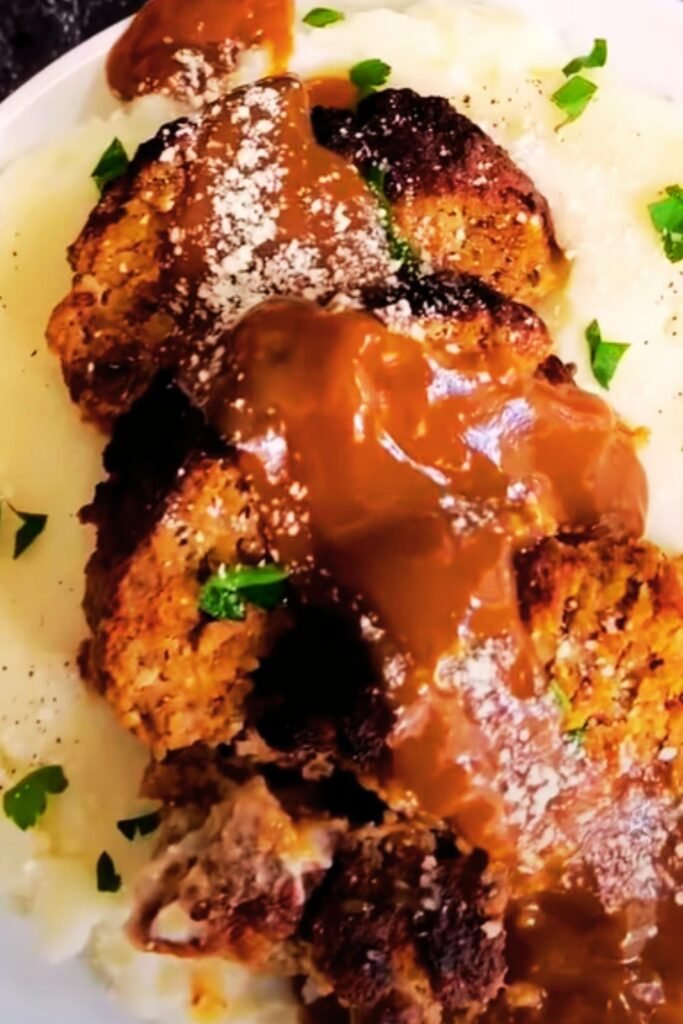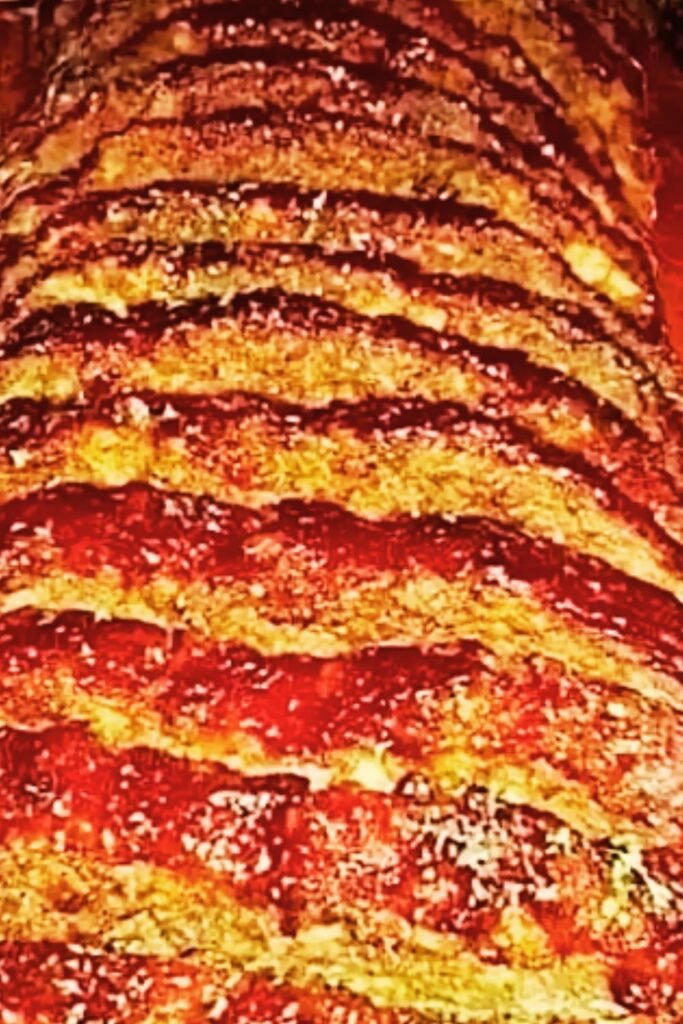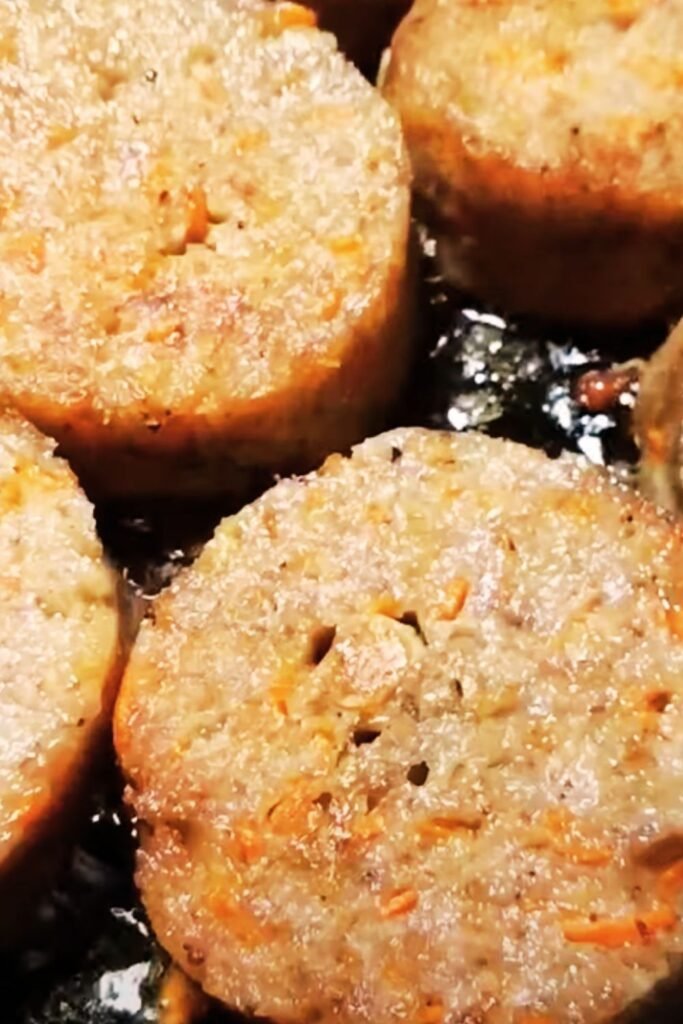There’s something magical about a perfectly crafted meatloaf that transforms this humble dish into a masterpiece of comfort food. Today, I’m sharing my perfected take on the famous meatloaf recipe inspired by culinary excellence. After countless attempts and fine-tuning, I’ve managed to capture that perfect balance of flavors and textures that will make your family beg for seconds.
Why This Meatloaf Recipe Stands Out
Before diving into the recipe, let me tell you why this particular meatloaf deserves a spot in your regular meal rotation. Unlike typical meatloaf recipes that can turn out dry and bland, this version delivers incredible moisture and depth of flavor. The secret lies in the perfect combination of ingredients and cooking techniques that create a beautiful harmony on your plate.
I spent years experimenting with different meatloaf recipes before landing on this masterpiece. What sets it apart is the attention to detail – from the selection of meats to the precise balance of aromatics and binding agents. This isn’t just another meatloaf; it’s an experience your taste buds won’t forget.
Essential Ingredients
The foundation of an exceptional meatloaf starts with selecting quality ingredients. Here’s what you’ll need to gather before starting:
For the Meatloaf:
- 1 pound (450g) ground beef (80/20 fat content is ideal)
- 1/2 pound (225g) ground pork
- 2 large eggs, lightly beaten
- 1 medium onion, finely diced
- 3 garlic cloves, minced
- 1 medium carrot, finely grated
- 1 stalk celery, finely diced
- 1 red bell pepper, finely diced
- 3/4 cup breadcrumbs (preferably panko)
- 1/4 cup whole milk
- 2 tablespoons Worcestershire sauce
- 1 tablespoon Dijon mustard
- 2 tablespoons fresh parsley, chopped
- 1 tablespoon fresh thyme leaves
- 1 teaspoon dried oregano
- 1 teaspoon smoked paprika
- 1 1/2 teaspoons sea salt
- 1/2 teaspoon freshly ground black pepper
- 1/4 teaspoon cayenne pepper (optional)
For the Glaze:
- 1/2 cup ketchup
- 2 tablespoons brown sugar
- 1 tablespoon apple cider vinegar
- 1 teaspoon Worcestershire sauce
- 1/2 teaspoon garlic powder
- 1/4 teaspoon smoked paprika
- Pinch of cayenne pepper (optional)
Kitchen Equipment You’ll Need
Before getting started, make sure you have these essential tools on hand:
- Large mixing bowl
- Measuring cups and spoons
- Sharp knife and cutting board
- Grater for vegetables
- 9×5-inch loaf pan
- Aluminum foil
- Meat thermometer
- Small saucepan (for the glaze)
- Pastry brush
The Perfect Meatloaf: Step-by-Step
Let me guide you through creating this remarkable meatloaf. The process might seem lengthy, but the results are worth every minute invested.
Step 1: Prepare Your Ingredients
- Preheat your oven to 350°F (175°C).
- Line a 9×5-inch loaf pan with parchment paper, leaving some overhang on the sides to easily lift the meatloaf out later. Alternatively, you can shape the meatloaf by hand on a parchment-lined baking sheet.
- Finely chop all your vegetables. The key is to dice them small enough that they’ll cook through and integrate seamlessly into the meatloaf.

Step 2: Sauté The Aromatics
This extra step might seem unnecessary, but trust me, it makes all the difference:
- Heat 1 tablespoon of olive oil in a skillet over medium heat.
- Add the diced onions, carrots, and celery. Cook for about 5-6 minutes until softened but not browned.
- Add the minced garlic and bell pepper, cooking for another 2 minutes until fragrant.
- Season with a pinch of salt and pepper.
- Remove from heat and allow to cool completely before adding to the meat mixture.
Step 3: Prepare The Panade
A panade is a mixture of bread and liquid that helps keep your meatloaf moist:
- In a small bowl, combine the breadcrumbs and milk.
- Let sit for 5 minutes to allow the breadcrumbs to absorb the milk.
Step 4: Mix The Meatloaf
This is where the magic happens:
- In a large mixing bowl, combine the ground beef and pork.
- Add the beaten eggs, cooled vegetable mixture, and soaked breadcrumbs.
- Add Worcestershire sauce, Dijon mustard, herbs, and spices.
- Using clean hands (the best tools for this job), gently mix everything together until just combined. Avoid overmixing as this can make your meatloaf tough.
Step 5: Shape The Meatloaf
- Transfer the meat mixture to your prepared loaf pan, pressing down gently to remove air pockets.
- Alternatively, shape the mixture into a loaf (approximately 9×5 inches) on a parchment-lined baking sheet.
- Use your hands to smooth the top and sides.
Step 6: Prepare The Glaze
The glaze adds a wonderful tangy-sweet finish to the meatloaf:
- In a small bowl, whisk together all glaze ingredients until smooth.
- Reserve 1/3 of the glaze for serving.
- Brush the remaining 2/3 of the glaze over the top and sides of the meatloaf.
Step 7: Baking Your Masterpiece
- Place the meatloaf in the preheated oven.
- Bake for 45 minutes.
- Apply another layer of glaze.
- Continue baking for about 15-20 more minutes, or until the internal temperature reaches 160°F (71°C) when measured with a meat thermometer.
- If the top starts to brown too quickly, tent loosely with aluminum foil.
Step 8: Rest Before Serving
- Once done, remove the meatloaf from the oven and let it rest for at least 10 minutes before slicing. This crucial step allows the juices to redistribute throughout the meat.
- Gently lift the meatloaf out of the pan using the parchment paper overhang.
- Transfer to a cutting board, slice into 1-inch thick portions, and serve with the reserved glaze on the side.

Nutritional Information
Understanding the nutritional content helps in meal planning. Here’s a breakdown per serving (based on 8 servings):
| Nutrient | Amount | % Daily Value* |
|---|---|---|
| Calories | 320 | – |
| Total Fat | 18g | 23% |
| Saturated Fat | 6.5g | 33% |
| Cholesterol | 105mg | 35% |
| Sodium | 620mg | 27% |
| Total Carbohydrates | 15g | 5% |
| Dietary Fiber | 1g | 4% |
| Sugars | 6g | – |
| Protein | 24g | 48% |
| Vitamin A | – | 15% |
| Vitamin C | – | 20% |
| Calcium | – | 6% |
| Iron | – | 15% |
*Percent Daily Values are based on a 2,000 calorie diet.
Common Meatloaf Mistakes to Avoid
Over my years of cooking, I’ve identified several pitfalls that can turn your meatloaf from fabulous to forgettable:
- Overmixing the meat mixture – This creates a dense, tough texture. Mix just until ingredients are combined.
- Using lean meat only – Some fat is essential for moisture and flavor. The 80/20 beef combined with pork provides ideal fat content.
- Skipping the panade – The breadcrumb and milk mixture is crucial for moisture retention.
- Not cooking aromatics beforehand – Raw onions and vegetables release water during cooking, making your meatloaf soggy.
- Forgetting to let it rest – Cutting immediately after baking causes juices to run out, resulting in dry meatloaf.
- Incorrect oven temperature – Too high, and the outside burns before the inside cooks; too low, and it dries out during extended cooking.
- Not using a meat thermometer – Visual cues can be misleading; 160°F (71°C) is the safe internal temperature.
Delicious Variations to Try
While this recipe is exceptional as is, here are some variations I’ve experimented with that you might enjoy:
Mediterranean-Inspired:
- Add 1/2 cup crumbled feta cheese
- Include 1/4 cup chopped Kalamata olives
- Mix in 1 tablespoon dried oregano
- Add 2 tablespoons sundried tomatoes, chopped
- Replace parsley with fresh dill
Southwestern Twist:
- Add 1 can (4 oz) diced green chilies, drained
- Include 1/2 cup corn kernels
- Mix in 1 tablespoon ground cumin
- Add 1 teaspoon chili powder
- Top with shredded cheddar for the last 15 minutes of baking
Mushroom Lover’s:
- Add 8 oz finely chopped mushrooms, sautéed until moisture evaporates
- Include 1 tablespoon soy sauce for umami
- Mix in 1 teaspoon dried thyme
- Add 2 tablespoons grated Parmesan cheese
Perfect Side Dishes
A great meatloaf deserves equally impressive sides. Here are my favorite pairings:
Classic Companions:
- Creamy mashed potatoes with chives
- Garlic-roasted green beans
- Honey-glazed carrots
- Buttery corn on the cob
- Fresh garden salad with balsamic vinaigrette
Creative Alternatives:
- Cauliflower mash with roasted garlic
- Sweet potato fries with smoked paprika
- Roasted Brussels sprouts with balsamic glaze
- Quinoa pilaf with herbs and lemon
- Sautéed kale with garlic and red pepper flakes

Make-Ahead and Storage Tips
One of the beautiful aspects of meatloaf is how well it works for meal prep:
Make-Ahead Options:
- Prep the raw mixture: Combine all ingredients and shape the meatloaf. Cover tightly with plastic wrap and refrigerate for up to 24 hours before baking.
- Prepare the vegetables ahead: Sauté the aromatics, cool completely, and refrigerate in an airtight container for up to 2 days before mixing into the meatloaf.
- Fully cook and refrigerate: Bake the meatloaf completely, allow to cool, then refrigerate. Slice when cold for perfect portions, then reheat individual slices as needed.
Storage Guidelines:
- Refrigerator: Store cooled meatloaf in an airtight container for up to 4 days.
- Freezer: Wrap cooled meatloaf tightly in plastic wrap, then aluminum foil. Freeze for up to 3 months.
Reheating Instructions:
- Oven method: Preheat to 300°F (150°C). Place slices on a baking sheet, cover with foil, and heat for 15-20 minutes until warmed through.
- Microwave method: Place a slice on a microwave-safe plate, cover with a damp paper towel, and heat in 30-second intervals until warmed.
- Skillet method: For a delicious twist, sear cold meatloaf slices in a hot skillet with a touch of butter until crisp on both sides and heated through.
Serving Suggestions
Elevate your meatloaf dinner with these serving ideas:
- Classic comfort meal: Serve with mashed potatoes, creating a well in the center to hold gravy, with a side of buttered peas.
- Meatloaf sandwich: The next day, place a thick slice between toasted sourdough bread with lettuce, tomato, and a spread made from equal parts mayo and leftover glaze.
- Family-style platter: Arrange sliced meatloaf on a large serving platter surrounded by roasted vegetables. Drizzle with additional warmed glaze before serving.
- Individual portions: For a dinner party, use a muffin tin to create individual mini-meatloaves, reducing the cooking time to about 25-30 minutes.
- Brunch feature: Serve a slice alongside eggs and roasted potatoes for a hearty weekend brunch.
Frequently Asked Questions
Over the years, I’ve received many questions about making the perfect meatloaf. Here are answers to the most common queries:
Q: Why does my meatloaf fall apart when slicing?
The binding elements are crucial for a meatloaf that holds together. Make sure you’re using enough eggs and breadcrumbs, and don’t skip the resting period after baking. Also, slicing while the meatloaf is too hot can cause it to crumble.
Q: Can I use just ground beef instead of a beef and pork mixture?
Absolutely! While the beef-pork combination provides optimal flavor and moisture, you can use 1.5 pounds of ground beef instead. I recommend sticking with an 80/20 lean-to-fat ratio to maintain juiciness.
Q: How can I make this recipe gluten-free?
Simply replace the traditional breadcrumbs with gluten-free breadcrumbs, crushed gluten-free crackers, or cooked and cooled quinoa. Also, verify that your Worcestershire sauce is gluten-free, as some brands contain malt vinegar.
Q: What’s the best way to know when my meatloaf is done?
Always use a meat thermometer inserted into the center – it should read 160°F (71°C). Visual cues can be misleading, especially with the glaze on top. Undercooking poses safety risks, while overcooking results in dryness.
Q: Can I make this recipe dairy-free?
Yes! Replace the milk in the panade with unsweetened almond milk, oat milk, or even beef broth. The key is providing enough moisture to the breadcrumbs.
Q: My meatloaf always ends up swimming in grease. How can I prevent this?
There are two effective methods: 1) Use a loaf pan with drainage holes that sits inside another pan, or 2) Form your meatloaf on a broiler pan so excess fat drips away. Alternatively, you can carefully pour off excess fat during the baking process.
Q: How can I add more vegetables without affecting the texture?
The trick is to finely mince or grate additional vegetables, then sauté them until all moisture evaporates before adding to the meat mixture. Zucchini, mushrooms, and bell peppers work particularly well.
My Personal Tips for Meatloaf Success
After making this recipe countless times, I’ve developed some insider tips that elevate it from good to unforgettable:
- Test your seasonings: Before forming the entire loaf, pinch off a small amount of the mixture and cook it in a skillet. Taste and adjust seasonings as needed.
- Create a free-form loaf: For more caramelization and flavor, shape your meatloaf by hand on a parchment-lined baking sheet instead of using a loaf pan.
- Use a food processor: Pulse your vegetables until finely chopped for perfect consistency throughout the meatloaf.
- Add depth with umami: A tablespoon of tomato paste or a teaspoon of soy sauce/fish sauce incorporated into the meat mixture enhances the savory flavors.
- Glaze in layers: Apply half the glaze before baking and the remainder during the last 15 minutes for a deeper flavor profile.
- Let ingredients come to room temperature: Remove the meat from the refrigerator 30 minutes before mixing to ensure even cooking.
- Add a center surprise: Create a tunnel through the center of your shaped meatloaf and fill it with cheese, sautéed mushrooms, or spinach before sealing and baking.
Final Thoughts
Meatloaf embodies the essence of comfort food – unpretentious yet deeply satisfying when done right. This recipe transforms what some consider a basic dish into something truly special, worthy of both family dinners and entertaining guests.
What I love most about this recipe is its versatility. While I’ve provided a specific set of ingredients and instructions, don’t be afraid to make it your own. The fundamental techniques – the panade for moisture, sautéing aromatics, the perfect meat blend, and that irresistible glaze – are what make this recipe foolproof.
Remember that great meatloaf, like many culinary classics, improves with practice. Each time you make it, you’ll develop a better feel for the perfect consistency and seasoning balance. And perhaps the best part? The leftovers are arguably even better than the first serving, as the flavors continue to meld overnight.
I hope this recipe brings as much joy to your table as it has to mine. There’s something deeply satisfying about watching family and friends savor each bite of something you’ve crafted with care. That, for me, is what cooking is all about.
Q&A Section
Q: Can I freeze unbaked meatloaf mixture?
Yes! Shape your meatloaf, then wrap it tightly in plastic wrap followed by aluminum foil. Freeze for up to 3 months. Thaw completely in the refrigerator (this takes about 24 hours) before baking as directed. Don’t apply the glaze until you’re ready to bake.
Q: My family doesn’t like vegetables. Can I still make this recipe?
Absolutely! The beauty of this recipe is that the vegetables are finely chopped and sautéed, making them nearly undetectable in the final dish. They add moisture and flavor without a noticeable texture. If you’re dealing with extremely picky eaters, you can reduce the quantities or even puree the sautéed vegetables before adding them to the meat mixture.
Q: What’s the best meat thermometer to use?
I recommend an instant-read digital thermometer for quick and accurate readings. These are relatively inexpensive and incredibly useful for all kinds of cooking beyond just meatloaf. If you cook meat regularly, consider investing in a probe thermometer that can stay in the meatloaf while cooking, with the display unit remaining outside the oven.
Q: Is it possible to reduce the sodium content?
Yes, you can reduce sodium by using low-sodium versions of Worcestershire sauce and ketchup, and by cutting the added salt in half. The other flavoring ingredients will still provide plenty of taste to compensate.
Q: How do I prevent my meatloaf from being too dense?
The key is gentle handling. Mix the ingredients just until combined – overmixing compacts the meat proteins, resulting in a dense texture. Also, avoid pressing the mixture too firmly into the loaf pan. The meat should be cohesive but not compressed.
Q: Can I make mini meatloaves instead of one large loaf?
Definitely! Individual meatloaves are perfect for portion control and faster cooking. Shape the mixture into smaller loaves on a parchment-lined baking sheet or use a muffin tin for uniform portions. Reduce the cooking time to approximately 25-30 minutes, still ensuring the internal temperature reaches 160°F (71°C).